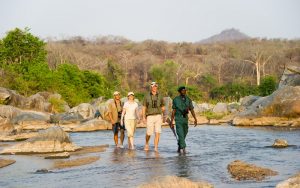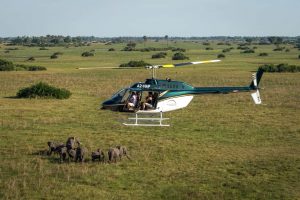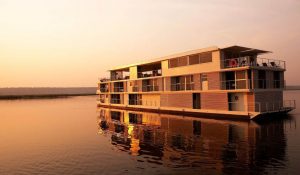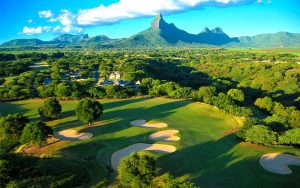When it comes to providing luxury Botswana safari holidays, Ubon Safari is the leading experts. Botswana has a variety of attractions, drinking and eating venues, culture and heritage which is a big part for tourists to experience. Our well-trained, professional tour guides will give you a tour of Botswana to discover these spectacular places.
A landlocked country located in Southern Africa, Botswana has a history of over 100,000 years when the first humans lived in this region. They were the African Busman of San and Khoi, people who spoke Khoisan languages and lived as hunter-gatherers. Less than 10,000 San people still live the traditional life of a hunter-gatherer.
Covering an area of 581,730 square kilometres, Botswana is the 48th largest country in the world. Also, safari holidays in Botswana offers one of the most magical experiences for African safari lovers. With the desert and delta, Botswana has different areas of wildlife habitat for you to discover such as The Grasslands and Savannas.
The Kalahari Desert covers 70% of the country’s land surface. The Okavango Delta (which is one of Botswana’s main attractions) is believed to be one of the largest inland deltas in the world.
Luxury Botswana safari holidays has never been more exciting! Major tourist destinations include the Chobe National Park and Moremi Game Reserve in the Okavango Delta. Other game reserves such as the Central Kalahari in the Kalahari Desert, Makgadikgadi Pans National Park and Nxai National Park in the Makgadikgadi Pan.
On top of this, activities like gliding in the Mokoro, quad biking, walking safaris and night game drives are arranged when you book our Botswana safari holidays.
CAPITAL CITY: GABORONE
AIRPORT: FRANCISTOWN INTERNATIONAL AIRPORT
CURRENCY: BOTSWANA PULA (BWP)
LANGUAGE: ENGLISH, SETSWANA AND SHONA
VOLTAGE: 231V/50HZ South African Plug
DRY SEASON:
MAY TO OCT – GREAT FOR WILDLIFE SPOTTING
WET SEASON:
NOVEMBER TO APRIL – GREEN SCENERY, CALVING SEASON, GREAT BIRDWATCHING, THICK VEGETATION
ROADS CAN BE IMPASSABLE
BEST TIMES:
JUNE TO AUGUST (OKAVANGO, MOREMI & CHOBE) AND MARCH TO MAY (OTHER PARKS)
HIGH SEASON – JULY – OCTOBER (CHOBE FALLS IS BUSY)
LOW SEASON – DECEMBER – APRIL (SOME LODGES ARE CLOSED)
BEST WEATHER:
APRIL, MAY
Go to our Visa page to find out whether you need a visa to enter Botswana
http://thetravelvisacompany.co.uk/ubonsafari/botswana/
Find out more about Botswana on the Botswana’s Tourism site
http://www.botswanatourism.co.bw/
FREQUENTLY ASKED QUESTIONS
DO I NEED A VISA
AUSTRALIA – 3 MONTHS ONLY / EUROPEAN COUNTRIES – YES / UNITED KINGDOM – 3 MONTHS ONLY / USA – 3 MONTHS ONLY
Please enquire with the Botswana Embassy in your country of Residence as we recommend you get you visa before you before you travel.
Yellow Fever Certificates may be required to be shown on entry. All foreign tourists under 16yrs are required to carry Birth Certificates.
Please carry certified copies.
TIPPING
It is not mandatory to tip however we do recommend you to tip in Restaurants, Bars something that would suit you. For Drivers, Guides and Porters we recommend a minimum of USD 5 per person per day.
INTERNET ACCESS
Most places have WIFI / internet, however in camps and lodges you may be limited to some specified areas, in camping safaris thereis no internet.
MOBILE PHONE ACCESS
Most of the locations in Botswana have great mobile coverage especially in cities and towns. There’s limited access in some of the rural areas. A local sim would be easily available for purchase.
WHAT ARE THE TOILETS LIKE?
Western style Toilets are available in most hotels, lodges and camps. Some areas may have squat toilets.
DRINKING WATER
Drinking tap water is not recommended. Mineral water is always available.
ARE CREDIT CARDS ACCEPTED?
Please inform your Bank before you travel to ensure you will not have problems using your cards. Credit card facilities are available in some areas only.
ATMS:
ATMs are available in major cities and towns.
DO I NEED A TRAVEL INSURANCE?
It is mandatory you should have Health / Travel Insurance
PUBLIC HOLIDAYS
Please see http://www.worldtravelguide.net/botswana/public-holidays
ELECTRICITY / PLUGS:
Electricity in Botswana has 231V and 3 Pin flat plugs although some new hotels are now having round pin plugs so carry your travel plug.
DOES ZIMBABWE HAVE MALARIA:
Yes, visit your GP before you travel for your vaccinations and Malaria pills.
TRAVEL TIPS
- Dress respectfully, shoulders to knees should be covered especially in when entering places of worship.
- Respect local traditions, customs and religions
- Please do not buy coral, ivory or any animal products
- Dispose of litter appropriately in bins
- Do not throw cigarette butts especially in the parks as it may cause fire and destroy wildlife and habitats.
- Don’t be afraid to learn the local language and smile.
- Please support the local shops and people
- When taking photos of people please ask permission
Here at Ubon Safari, we strive to provide you with a fantastic experience across Africa and visiting places like Botswana will make your safari holiday exceptional. If you would like to book our luxury Botswana safari holidays, contact us on +44 203 198 0484 and one of our helpful representatives will be more than happy to make the arrangements with you.






